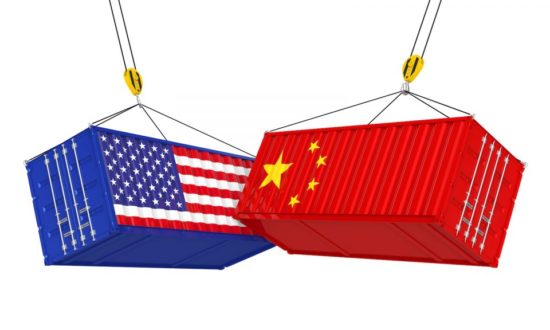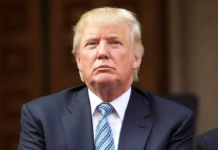Metal tariffs trigger angry reaction from US allies while talks in Beijing stall
Vincent Kolo, chinaworker.info
The world has moved closer to a trade war on multiple fronts as Trump’s administration rolls out its aggressive ‘America First’ trade policies, taking aim at both close US allies and major rivals.
On 1 June, the US implemented its long threatened tariffs of 25 percent on steel and 10 percent on aluminium imports from the European Union (EU), Canada and Mexico. These governments immediately promised retaliation with tariffs on hundreds of US products from motorcycles to liquor.
Trump has threatened further tariffs of 25 percent on imported cars and trucks. This would be a much bigger blow to Germany, Mexico and Japan than the metal tariffs. US steel and aluminium imports total around US$45 billion, while the value of vehicle imports is US$208 billion. For German car giants Mercedes-Benz and BMW the US accounts for around 15 percent of global sales. For Japan the stakes are even higher – one in five cars it produces are sold in the US.
Coming just weeks after the US withdrawal from the Iran nuclear deal and its imposition of tough sanctions against any companies that trade with Iran, the opening shots of Trump’s trade war are massively aggravating tensions between the different capitalist powers.
When finance ministers of the G7 group met in Canada on 2 June, six of them (all except the US) issued a statement attacking the US tariffs. “We still have a few days to take the necessary steps to avoid a trade war between the EU and the US,” said France’s finance minister Bruno Le Maire.
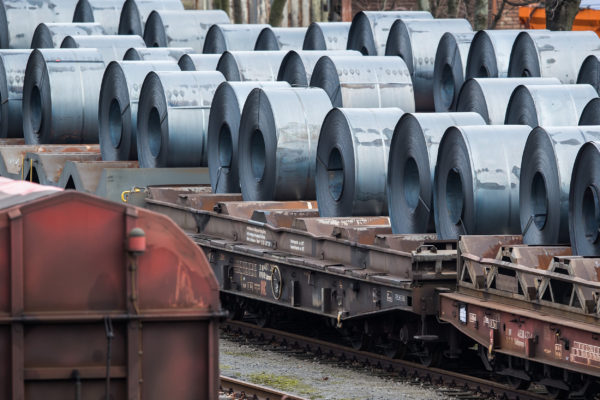
US-China stalemate
Meanwhile, the third round of trade talks in Beijing aimed at reaching a deal between the world’s two biggest economies, the US and China, ended in stalemate. Trump demands that China, “the real target for his trade war” as Larry Elliot says in the Guardian, slashes its trade surplus with the US which is currently running at US$30 billion per month.
China sells four times more to the US than it buys from it. But while Trump blames this on “cheating” it rather reflects deep structural changes in the global capitalist economy, including China’s rise as the world’s factory at the centre of globalised production chains. China’s manufacturing sector is one-and-a-half times bigger than America’s. The Chinese regime also helps to fund US spending by parking a large portion of its trade surpluses in US securities.
As the negotiations, threats and counter-threats have progressed, accompanied by a stream of contradictory Trump tweets, it has become clear that rather than the trade deficit, it is China’s technological gains and plans to move its industry up the global value chain that are the real bone of contention for the US government.
A trade deal between Beijing and Washington can’t be ruled out but at this point in time it seems a long way off. Even if a deal is struck it could break down before long.
The latest talks revealed a hardening of positions. This followed an apparent but short-lived “breakthrough” at the previous (second) round of talks in Washington in May, when both sides signed a joint statement that didn’t say much but agreed no tariffs would be imposed while the talks continued. In return the Chinese side agreed to “substantially” increase its purchases of US goods to reduce its trade surplus, but refused to put a specific figure on this. This was the equivalent of a “ceasefire” between the two sides but it collapsed after just nine days.
As US Commerce Secretary Wilbur Ross was on his way to Beijing for the third round of talks, Trump renewed his threat to slap 25 percent tariffs on US$50 billion worth of “industrially significant technology” from China. A Chinese official told the Financial Times that Trump’s u-turn was “unexpected but also not a surprise”.
Trump’s erratic and unpredictable behaviour is partly a deliberate tactic to build pressure on an opponent, in this case China, to make concessions. But in the deadlocked talks in Beijing the Chinese side refused to go further than the vague promises made in May unless the US side gave an assurance not to proceed with tariffs.
How to make enemies
Beijing’s representatives also said they would pull out of talks altogether if tariffs or other sanctions are imposed by the US (which Trump has threatened from 15 June). This is a toughening of the Chinese position. At previous talks they have made clear they are prepared to offer concessions to the US, especially by getting out their cheque book and increasing purchases of US farm goods and natural gas. But Trump’s move to impose tariffs on Europe, Japan and other US allies just hours prior to the talks in Beijing undoubtedly emboldened the Chinese side to dig in.
The situation is extremely fluid and unstable. The EU and Japan have their own disputes with China, largely echoing the US government’s position. In April, 27 European ambassadors to China signed a report criticising Xi Jinping’s signature Belt and Road Initiative, a massive overseas investment scheme. The ambassadors said the BRI “runs counter to the EU agenda for liberalising trade and pushes the balance of power in favour of subsidised Chinese companies.”
The Chinese regime is particularly worried these states will form a bloc with Trump against it. But his ‘shotgun’ approach to international diplomacy – blasting in all directions – means this danger has receded at least in the short-term, giving Beijing greater room to manoeuvre.
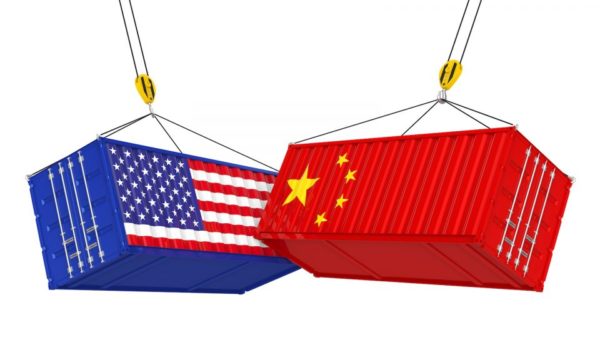
Nationalism
Nationalist pressures are rising in both China and the US. The Chinese regime is prepared to make concessions to Trump but on the condition it can control the narrative, to disguise these concessions as a voluntary act, the product of its own self-interest. In this way, agreements to buy more US goods will be translated as “increasing the availability of foreign goods for the growing Chinese consumer class”. Concessions on investment rules, intellectual property, and foreign ownership in previously closed-off state sectors will be “deepening China’s economic reform and opening”.
A telling sign is the regime’s closure of the most famous Maoist website, Utopia, last month, fearing it could act as a channel for nationalist anger against “capitulation to US imperialism”.
In the US, Trump is being outplayed at his own ‘America First’ game by Democrats and Republicans in Congress. With their eyes on the mid-term elections in November and increasingly sold on the merits of Trump-style populism, politicians of both capitalist parties are ramping up the anti-China rhetoric and attacking any signs of softening from Trump’s team.
Politicians of both parties are behind legislation in Congress that would prevent Trump from “rescuing” Chinese telecom giant ZTE, which he pledged to do last month reportedly after a direct approach from Xi Jinping. In April, ZTE was served with a crippling seven year embargo on buying microchips or software from the US as punishment for violating US sanctions against Iran and North Korea. The ruling was tantamount to a death sentence on ZTE, which uses US components in 90 percent of its products.
Senator Marco Rubio, a Republican anti-China hawk, claims there is a supermajority in Congress (meaning Trump would not be able to use his veto) not only to block any reprieve for ZTE but to impose similar bans on other Chinese tech companies such as Huawei. These pressures are now a significant stumbling block to any deal to avert a trade war.
US$200 billion reduction
In his 2016 election campaign Trump demanded a US$100 billion cut in the yearly deficit with China. He has since doubled this to US$200 billion – to be achieved in the next two years. This target is widely questioned as unrealistic, even impossible.
“The US economy simply cannot produce enough new goods for China to buy anytime soon,” commented economist Amitrajeet A. Batabyal. The US-China trade talks have focused on agriculture and energy, two sectors where the US could increase its exports to China. But last year’s total US farm exports were worth US$69 billion and energy exports US$150 billion. For China to close a US$200 billion gap it would need to import almost everything the US exports from these sectors.
In the technology sector, where China wants to substantially increase its imports and its investments in US companies, this is being blocked by the US government on “national security” grounds.
The Chinese regime is reluctant to agree a specific figure for deficit reduction. Failure to meet this could be used by the US to escalate the conflict at a later stage. There are also political concerns. Despite his unparalleled machinery of censorship and control, Xi Jinping would have great difficulty presenting this as anything other than bowing to US pressure. His ‘strongman’ image, which is a crucial political asset for the regime in facing down internal opposition, would be dented.
Different models
The growing tensions between the US and China run much deeper than trade. Washington’s propaganda has shifted from the trade deficit to financial investments and China’s alleged theft of US technology. Trump’s trade negotiators increasingly talk about the need for “structural changes”, taking aim at China’s state capitalist economic model, its government support for key industries and walls against foreign ownership.
Xi’s regime has offered concessions even here, for example agreeing to lift investment restrictions in its financial and automotive sectors. But these are limited, targeted (to entice influential segments of overseas capital) measures which will not change the overall trend, which is to maintain and even strengthen the state capitalist features in China’s economy. In fact, if the technology war escalates between the US and China, this will inevitably be met by increased state intervention to fast-track the growth of China’s indigenous tech sector. “Self reliance” in the high-tech sector was the theme of a keynote speech by Xi Jinping on 28 May, just days before the Beijing trade negotiations.
In the ‘ideological’ battle that is unfolding alongside economic and geopolitical conflicts, China’s ruling group believes its authoritarian state capitalism is superior to Western free market capitalism. This is based on China’s performance since the global crisis of 2008, maintaining relatively fast economic growth while Western capitalism has slid into stagnation and political turmoil. These Chinese ‘successes’ however, have required the most expensive police state ever constructed and unprecedented levels of debt, which the regime knows could trigger a serious financial crisis. But the strongest argument on Xi Jinping’s side in this battle of different capitalisms is the unholy mess in the opposite camp.
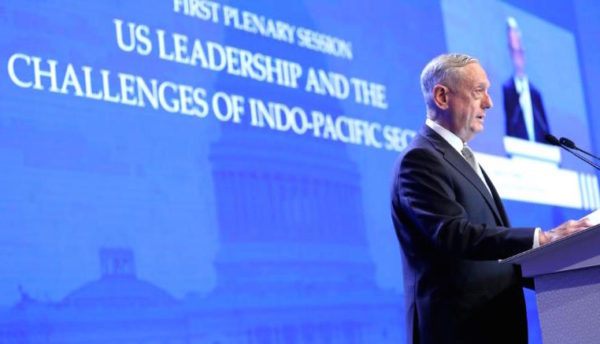
Imperialist conflict
This ‘ideological’ battle is one element in the sharpening imperialist power struggle on a global scale, particularly between the US and China. Increasingly, across the spectrum of capitalist politics in the US, especially in the military, a consensus is building that now is the time to push back against China, which is the most powerful of its putative challengers.
Writing in the Financial Times (9 April 2018), Trump’s trade advisor and author of ‘Death by China’, Peter Navarro, took aim at China’s technological advances and its grand industrial modernisation plan ‘Made in China 2025’. This plan aims to give China a global lead in cutting-edge technologies including robotics, advanced information technology, aircraft engines, green vehicles and biopharma. If China’s plan succeeds, Navarro declared, “the US simply will not have an economic future.”
Based on growing imperialist rivalries, trade is increasingly being weaponised and used as a proxy for military action. This is the legacy of the global crisis that began in 2008. Before the crisis global trade was growing at twice the rate of global GDP growth but has since stagnated.
A World Bank survey last year showed that the world’s top sixty economies adopted more than 7,000 new protectionist measures since 2008. The US and EU topped the list with over 1,000 measures each. Trump’s ‘America First’ doctrine is a new manifestation of a process that was already underway.
These moves mark a shift, most clearly by the US administration, to regulated trade over so-called free trade. Socialists point out that free trade is largely a myth in a capitalist world economy where most trade is controlled by a few hundred big corporations. We are for ‘regulated’ trade – but not if the capitalists and anti-working class politicians like Trump are doing the regulating.
In a socialist society, with capitalism eliminated and the economy planned democratically by the working class, trade and international relations would also develop on the basis of democratic planning. This would be an incredible lever for developing the economy globally to meet the needs of the people and the environment.
Trump’s trade sanctions such as the steel and aluminium tariffs are motivated on “national security” grounds in order to bypass the WTO system and its global rules. Ironically, this system was largely the handiwork of US governments in the past. While moving away from ‘free market’ principles in trade, however, in most other policy areas Trump stands for extreme de-regulation as shown by his recent scrapping of banking regulations that were imposed after 2008 to guard against another financial crash.
Military tensions
In the 21st century, US capitalism has lost ground compared to its main global competitors. This is both in economic and in geopolitical terms, despite the US boasting unparalleled military power. A sense of impending crisis is spelt out in several recent government documents such as the National Security Strategy, published in December, which explicitly singles out China and Russia as competitors that have emerged to “challenge American power, influence, and interests.”
The National Defence Strategy unveiled in January states that “great-power competition – not terrorism – is now the primary focus of US national security.” This confrontational tone, combined with an increased readiness to use economic sanctions (tariffs) as a policy weapon against both rivals (China) and ‘friends’ (EU, Canada, Japan) marks a historical shift in US policy.
For China it marks the end of more than 40 years of relatively settled and benign relations with various US administrations, Republican and Democrat. Trump is “the first US president to specifically define China as ‘rival’ since Richard Nixon’s ice-breaking trip to China in 1971,” commented Cary Huang in the South China Morning Post.
Hard-line anti-China ideologues like Lighthizer (US Trade Representative) and Navarro wield key influence over Trump’s trade policies, while newly appointed National Security Advisor, Bolton, is a well-known advocate of confrontation with China and “preventive war” against North Korea.
Trump’s administration is stepping up its pressure on China over other issues unrelated to trade. At the recent Singapore security forum (Shangri-La Dialogue), US Defence Secretary Jim Mattis attacked China for “intimidating and coercing” it neighbours by militarising man-made islands in the South China Sea. For the same reason, China was demonstratively expelled from a multinational naval exercise in May as an “an initial response” from the Trump administration.
The US and its allies Britain and France have announced more so-called freedom of navigation exercises in the disputed waters. Both sides are raising their game in the South China Sea, with China installing advanced radar and surveillance equipment on the islands it controls and most recently landing a nuclear capable bomber on one of them.
Departing from previous diplomatic norms, Trump is not averse to mixing together geopolitical issues such as the South China Sea and Taiwan’s status (China opposes closer US ties or military support to the island), with economic issues, using one and then the other to gain leverage and “get the deal done”. This adds to global instability and increases the risks of escalation. While Beijing is prepared to make concessions over trade, it regards Taiwan and the South China Sea as “red lines” that cannot be crossed.
For socialists these developments are not totally surprising. The capitalist crisis and its political creations like Trump, but also China’s absolute ruler Xi, are destabilising the world. Socialists stress the need for the workers’ movement to act and speak independently and not be conned by one national capitalist gang or the other. Our alternative is economic planning and trade under a system of working class democracy to replace capitalist chaos and misrule.

